Welcome, fellow dog lovers! Whiskers are not only an adorable feature of our furry friends but also an essential tool for them to navigate their world. However, sometimes these whiskers can grow inward, leading to irritation, infection, and discomfort. In this blog, we’ll explore the causes and symptoms of infected ingrown dog whiskers and guide you through home care remedies for quick recovery. Our aim is to provide you with helpful, friendly advice that’s easy to follow and understand, ensuring that you feel confident and well-informed as you care for your canine companion. So, let’s dive in and learn how to manage and prevent infected ingrown whiskers, keeping your beloved pup happy, healthy, and whisker-worry-free!

Understanding Ingrown Dog Whiskers and the Need for Prompt Care
Before we delve into the nitty-gritty of ingrown whiskers, let’s first understand what whiskers are and why they’re so important for our furry friends. Whiskers, also known as vibrissae, are specialized, sensitive hairs that extend from a dog’s muzzle and other facial areas. They serve as sensory organs, helping dogs gather information about their surroundings. They also assist them in navigating through tight spaces, detecting air currents, and even sensing the emotions of their humans.
Ingrown whiskers occur when a whisker, instead of growing outward, curves and grows back into the skin, causing discomfort and potentially leading to infection. This issue might seem like a minor concern, but it’s crucial to address it promptly to prevent further complications, such as pain, swelling, and even the formation of abscesses. Early intervention is key to ensuring your dog’s comfort and overall health.
In the following sections, we’ll discuss the common causes and symptoms of infected ingrown whiskers and provide you with practical, effective home care solutions to help your dog recover quickly. With the right knowledge and approach, you can be your dog’s best advocate and caretaker, ensuring they remain happy, healthy, and whisker-trouble-free!
Causes and Symptoms: Identifying Infections in Ingrown Dog Whiskers
To effectively address the issue of infected ingrown whiskers, it’s essential to understand the root causes and be able to recognize the warning signs. Knowing what leads to ingrown whiskers and how to identify an infection can empower you to take appropriate action and provide your dog with the care they need. In this section, we’ll explore the various factors that contribute to the development of ingrown whiskers and discuss the symptoms that may indicate an infection. By familiarizing yourself with this information, you’ll be better prepared to manage any whisker-related issues. This ensures your dog’s comfort and well-being. Let’s get started on the path to a happier, healthier pup!

Root Causes: How Ingrown Whiskers Develop in Dogs
Understanding the underlying factors that contribute to the development of ingrown whiskers is crucial for effective prevention and treatment. Just like humans, dogs can experience various causes for this issue. Let’s explore some of the most common reasons why ingrown whiskers may develop in our canine companions:
- Trauma to the whisker follicles: Accidental injuries or rough play can sometimes damage the whisker follicles. This causes the whiskers to grow abnormally and curve back into the skin.
- Grooming mistakes: Overzealous or improper trimming of your dog’s whiskers can lead to ingrown hairs. It’s essential to follow proper grooming techniques and use the right tools to avoid such issues.
- Genetic predisposition: Some dog breeds may be more prone to ingrown whiskers due to their genetic makeup. The characteristics of their coat and skin may be a factor. Being aware of your dog’s breed-specific risks can help you take preventive measures.
- Underlying skin conditions: Certain skin issues, such as allergies, dermatitis, or inflammation, can cause the whisker follicles to become irritated. This disrupts normal growth patterns, leading to ingrown whiskers.
By familiarizing yourself with these root causes, you can take a proactive approach in minimizing the risk of ingrown whiskers and ensuring your dog’s comfort and health.
Warning Signs: Recognizing the Symptoms of Infected Ingrown Whiskers
Being able to identify the early symptoms of infected ingrown whiskers is essential for providing prompt and effective care for your dog. Catching the infection in its initial stages can make a significant difference in your pet’s recovery and overall well-being. Here are some common warning signs to watch out for:
- Redness and swelling: An infected ingrown whisker can cause the surrounding skin to become red and swollen. This often indicates inflammation and irritation.
- Pain or sensitivity around the area: Your dog may show signs of discomfort or pain when you touch the affected area or when they rub their face against surfaces.
- Pus or discharge: The presence of pus or a yellowish discharge from the affected area can be a sign of infection. This may signal that your dog’s immune system is actively fighting off bacteria.
- Crusting and hair loss: In some cases, the skin around the infected ingrown whisker may develop crusts. Hair loss may occur due to constant rubbing or scratching by your dog.
If you notice any of these symptoms, it’s important to take action and provide the necessary care for your dog. Remember, your vigilance and timely intervention can make all the difference in your furry friend’s health and happiness!
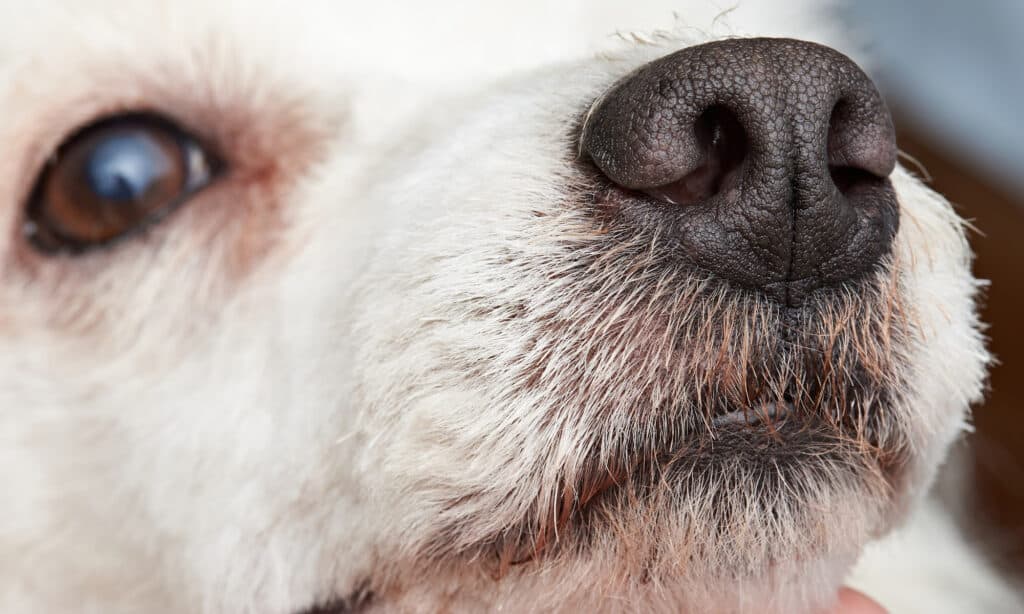
Home Care Solutions: Quick Recovery from Infected Ingrown Dog Whiskers
When it comes to managing infected ingrown whiskers, providing proper home care can play a significant role in your dog’s speedy recovery. In this section, we’ll guide you through a range of effective and practical solutions that can help your canine companion get back on their paws in no time. From assessing the situation and cleaning the affected area to applying topical treatments and preventing further irritation. We will cover all the essential steps to ensure you’re well-equipped to care for your furry friend.
Remember, your dog relies on you to keep them safe and healthy, and with the right knowledge and approach, you can make a real difference in their well-being. So, let’s dive into these home care solutions and help your dog overcome the challenge of infected ingrown whiskers!
Assessing the Situation: When to Consult a Vet for Ingrown Whiskers
Before taking any action to address your dog’s ingrown whisker issue, it’s essential to evaluate the severity of the situation. While many cases of infected ingrown whiskers can be managed at home, some instances may require the expertise of a veterinarian. Here are a few guidelines to help you determine when it’s time to consult a professional:
- Severity of the infection: If your dog’s ingrown whisker is accompanied by significant swelling, pus, or discharge, it’s advisable to seek veterinary care. Your vet can provide appropriate treatment and antibiotics to help fight off the infection and prevent complications.
- Unresponsive to home care: If you’ve tried home care solutions for a few days but see no improvement or if the condition worsens, it’s time to visit the vet. They can assess the situation and recommend a more targeted treatment plan.
- Recurring issues: If your dog experiences frequent ingrown whiskers or infections, a veterinarian can help determine if there’s an underlying issue that needs to be addressed. Your dog could be experiencing skin conditions, allergies, or other health concerns.
- Signs of distress: If your dog appears to be in significant pain, is lethargic, or has a fever, it’s crucial to seek veterinary care immediately. These could be signs of a more serious infection or health issue.
While it’s natural to want to provide care for your dog at home, knowing when to consult a veterinarian is crucial for their overall health and well-being.
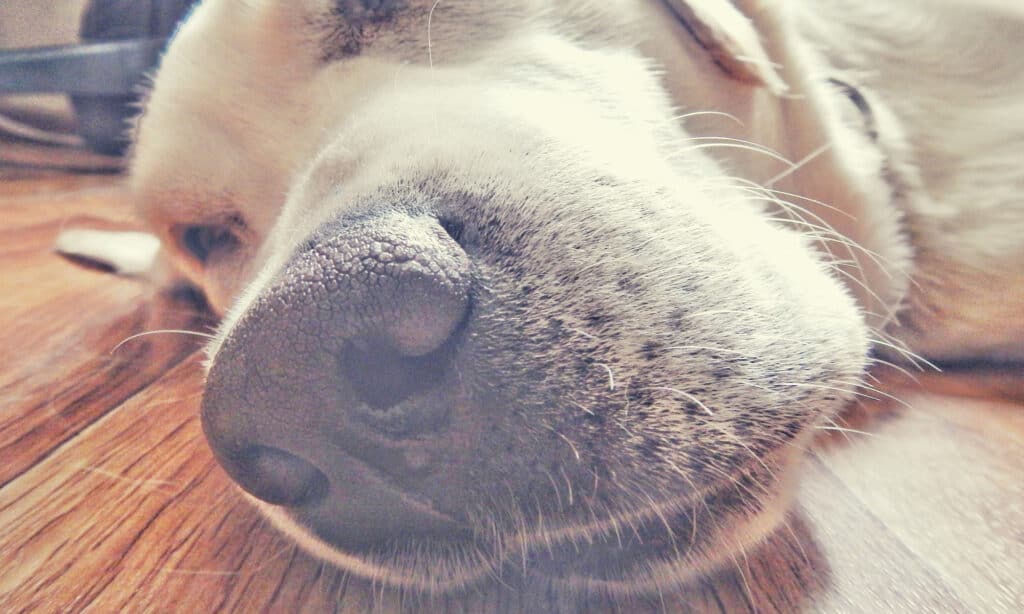
Clean and Disinfect: Safeguarding Your Dog’s Whiskers from Infection
When dealing with infected ingrown whiskers, maintaining proper hygiene and cleanliness is essential to promote healing and prevent the spread of infection. By following the right steps and using appropriate products, you can create a safe and supportive environment for your dog’s recovery. Here’s how to clean and disinfect the affected area effectively:
- Gently clean the area: Begin by using a soft, damp cloth or a cotton ball soaked in warm water to gently clean the skin around the infected whisker. This will help remove any dirt, debris, or discharge that may be present.
- Apply a pet-safe disinfectant: Once the area is clean, it’s crucial to apply a disinfectant or antiseptic solution to kill any bacteria and reduce the risk of infection. Look for pet-safe options, such as chlorhexidine or povidone-iodine solutions, which can be found at most pet stores or pharmacies. Dilute the solution according to the manufacturer’s instructions, and apply it gently using a cotton ball or gauze.
- Keep the area dry: After cleaning and disinfecting, gently pat the area dry with a clean, soft towel. It’s essential to keep the affected area dry to prevent the growth of bacteria and promote healing.
- Repeat as needed: Depending on the severity of the infection, you may need to clean and disinfect the area once or twice daily until the whisker heals and the infection subsides.
By following these simple steps, you can help your dog recover from an infected ingrown whisker and minimize the risk of further complications. In the next section, we’ll explore various topical treatments that can further support your dog’s healing process.
Topical Treatments: OTC and Natural Remedies for Infected Whiskers
In addition to keeping the affected area clean and disinfected, applying topical treatments can further support your dog’s recovery from an infected ingrown whisker. There are several over-the-counter (OTC) options and natural remedies available that can help soothe irritation and promote healing. Here are some treatments to consider:
- Over-the-counter ointments and creams: OTC antibacterial or antifungal creams can be applied to the affected area to combat infection and reduce inflammation. Always follow the product’s instructions and consult your veterinarian if you have any concerns.
- Hydrocortisone cream: A mild, pet-safe hydrocortisone cream can help alleviate itching and inflammation associated with the infected whisker. Apply a thin layer according to the package directions. Be sure to prevent your dog from licking or ingesting the cream.
- Aloe vera gel: Natural aloe vera gel can be used as a soothing and cooling agent. This can help reduce inflammation and discomfort. Make sure to choose a product without added fragrances or alcohol, as these can be irritating to your dog’s skin.
- Calendula ointment: Calendula, a natural herb with anti-inflammatory and antibacterial properties. It can be applied topically to help heal the infected whisker area. Look for a pet-safe calendula ointment or cream, and follow the manufacturer’s guidelines for application.
Always monitor your dog’s response to any topical treatments and discontinue use if you notice any adverse reactions, such as increased redness, swelling, or itching. In the next section, we’ll discuss strategies to prevent further irritation and help your dog heal faster from an infected ingrown whisker.
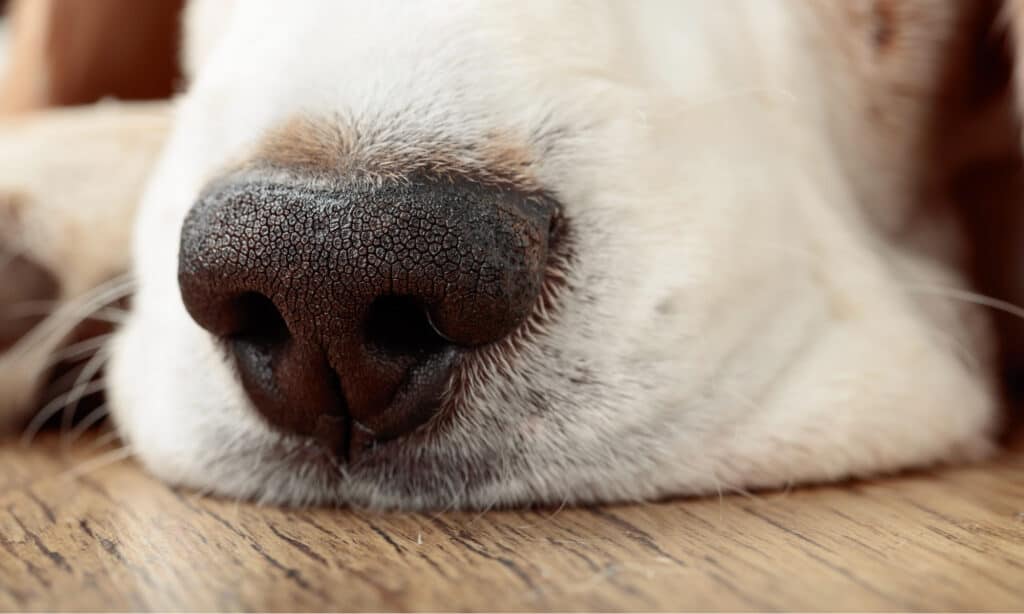
Preventing Further Irritation: Strategies to Help Your Dog Heal Faster
While treating the infected ingrown whisker is essential, it’s equally important to prevent further irritation and ensure your dog’s comfort during the healing process. By taking a few simple measures, you can help your canine companion recover more quickly and reduce the risk of complications. Here are some strategies to consider:
- Discourage scratching or rubbing: Your dog may instinctively try to scratch or rub the affected area This can exacerbate the infection and delay healing. Gently redirect your dog’s attention when you notice them trying to scratch, or consider using a soft, protective collar to prevent them from reaching the area.
- Keep the area clean: As mentioned earlier, maintaining cleanliness is crucial for preventing further irritation and infection. Continue to clean and disinfect the affected area as needed. Ensure your dog’s sleeping and living areas are kept clean as well.
- Minimize stress: Stress can negatively impact your dog’s immune system, making it harder for them to recover from infections. Provide a calm and comfortable environment, with plenty of opportunities for rest, to support their healing process.
- Monitor for signs of improvement or worsening: Keep a close eye on the affected area to track your dog’s progress. If you notice any signs of improvement, continue with your chosen treatment plan. However, if the infection worsens or doesn’t improve within a few days, consult your veterinarian for further guidance.
By implementing these strategies, you can help your dog heal more quickly from an infected ingrown whisker and prevent further irritation.
Prevention and Maintenance: Ensuring Healthy Whiskers for Your Dog
Now that we’ve covered the steps to help your dog recover from an infected ingrown whisker, it’s time to focus on prevention and maintenance to ensure their whiskers remain healthy and trouble-free in the future. By implementing these preventive measures and keeping a close eye on your dog’s whisker health, you can protect your furry friend from discomfort and potential complications. This ensures they enjoy a happy, whisker-worry-free life. Let’s dive in and discover how to maintain your dog’s whiskers in top-notch condition!
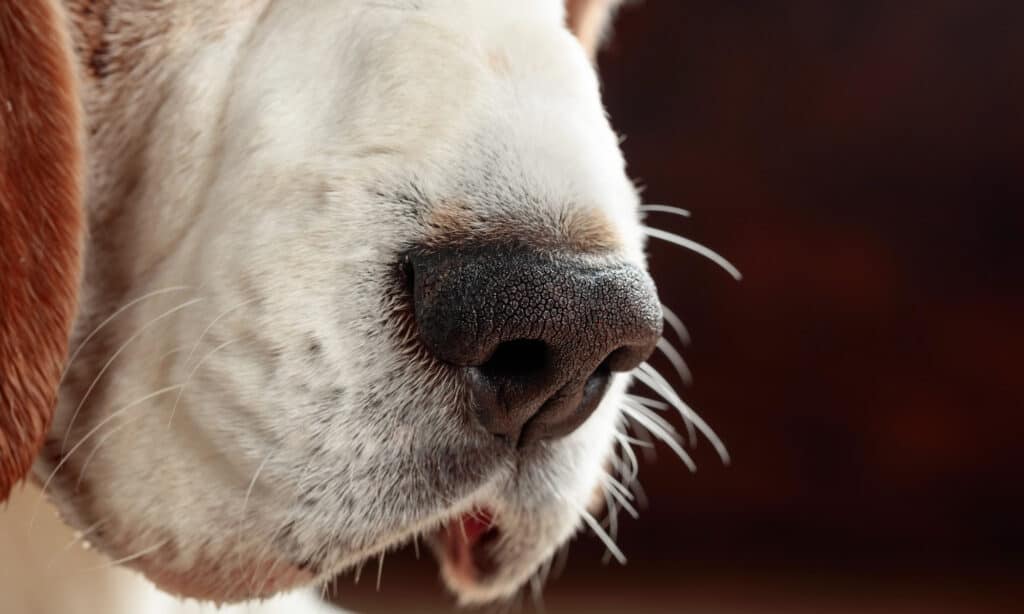
Grooming Essentials: Proper Whisker Care to Prevent Ingrown Issues
Proper grooming plays a vital role in preventing ingrown whiskers and ensuring your dog’s overall whisker health. By following the right techniques and using appropriate tools, you can significantly reduce the risk of ingrown issues and keep your dog comfortable and happy. Here are some grooming essentials to consider for maintaining your dog’s whiskers in the best possible condition:
- Avoid trimming whiskers: Unlike regular fur, dog whiskers are specialized sensory hairs that should not be trimmed or cut. They serve essential functions, such as navigation and communication. Avoid trimming your dog’s whiskers, as doing so can lead to ingrown hairs and other complications.
- Regular grooming: Regular brushing and grooming your dog’s face can help keep the whisker area clean. Make sure it’s free of dirt or debris that may contribute to infections or irritation. Use a soft brush designed for pets, and gently groom the whisker area without applying too much pressure.
- Check for signs of irritation: Regularly inspect your dog’s whisker area for signs of redness, swelling, or other indications of potential ingrown whiskers. Early detection can help prevent infections and minimize discomfort for your dog.
- Address underlying skin issues: If your dog is prone to skin conditions, such as allergies or dermatitis, it’s essential to manage these issues to reduce the risk of ingrown whiskers. Consult your veterinarian for guidance on treating and preventing skin problems that may impact your dog’s whisker health.
By incorporating these grooming essentials into your dog care routine, you can prevent ingrown whiskers and ensure the health and well-being of your canine companion. With proper care and attention, your dog’s whiskers will remain in excellent condition, and your furry friend will enjoy a comfortable, worry-free life.
A Healthy Skin and Coat: Supporting Your Dog’s Overall Well-being
Your dog’s skin and coat health plays a significant role in their overall well-being, including the condition of their whiskers. By supporting your dog’s skin and coat health, you can minimize the risk of ingrown whiskers and other issues that may arise from poor skin condition. Here are some essential tips to promote a healthy skin and coat for your canine companion:
- Balanced diet: Providing your dog with a well-balanced, nutritious diet is the foundation for maintaining healthy skin and coat. Look for high-quality dog food containing essential fatty acids which can help support skin health and maintain a shiny, strong coat.
- Regular grooming: As mentioned earlier, grooming your dog regularly is crucial for keeping their skin and coat in optimal condition. In addition to whisker care, brushing your dog’s entire body can help distribute natural oils, remove loose hair, and prevent matting.
- Bathing and skin care: Bathe your dog as needed using a gentle, pet-safe shampoo to keep their skin clean and free from irritants. Avoid over-bathing, as this can strip the skin of its natural oils and lead to dryness or irritation.
- Supplements: In some cases, your dog may benefit from supplements, such as fish oil or biotin, to support skin and coat health. Always consult your veterinarian before introducing any supplements to your dog’s diet.
- Regular check-ups: Schedule regular veterinary check-ups to ensure your dog’s overall health is monitored. Your vet can address any skin or coat issues that may arise. Your veterinarian can provide guidance and recommend treatments if needed.
By taking these steps to promote a healthy skin and coat, you’ll not only support your dog’s overall well-being but also help prevent potential whisker-related issues.
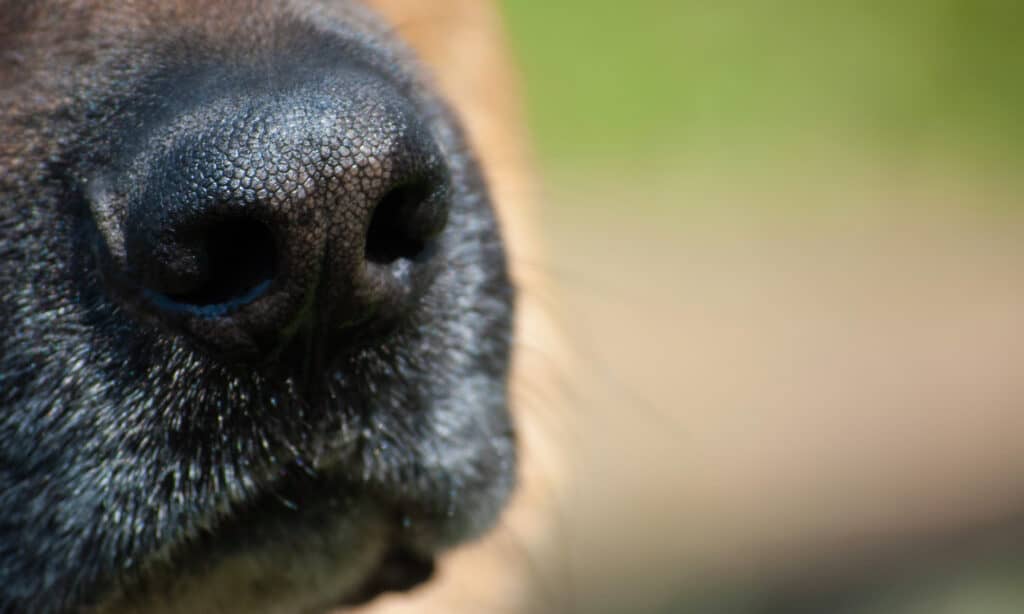
Knowledge is Power: Recognizing Early Signs and Seeking Expert Advice
When it comes to preventing and addressing ingrown whiskers in dogs, being well-informed and proactive is essential. By recognizing the early signs of potential problems and seeking expert advice when needed, you can ensure your dog’s whiskers remain healthy and minimize the risk of complications. Here are some key points to remember:
- Be vigilant: Regularly inspect your dog’s whisker area for any signs of irritation, inflammation, or infection. Familiarize yourself with the common symptoms of ingrown whiskers, and take action as soon as you notice any issues.
- Consult your veterinarian: If you’re unsure about your dog’s whisker health or suspect an infection, don’t hesitate to consult your veterinarian. They can provide expert guidance and recommend appropriate treatments to ensure your dog’s well-being.
- Keep learning: Stay informed about dog grooming and health by researching, reading articles, or participating in pet care forums. The more knowledge you have, the better equipped you’ll be to care for your dog’s whiskers and overall health.
- Share your experience: If you’ve successfully dealt with an ingrown whisker issue in your dog, consider sharing your experience with fellow dog owners. Your insights and advice can be invaluable to others facing similar challenges.
Ultimately, knowledge is your most powerful tool in ensuring your dog’s whisker health. By staying vigilant, recognizing early signs of trouble, and seeking expert advice when needed, you can protect your canine companion from the discomfort and complications associated with ingrown whiskers. With proper care and attention, your dog can enjoy a happy, healthy life, free from whisker-related concerns.
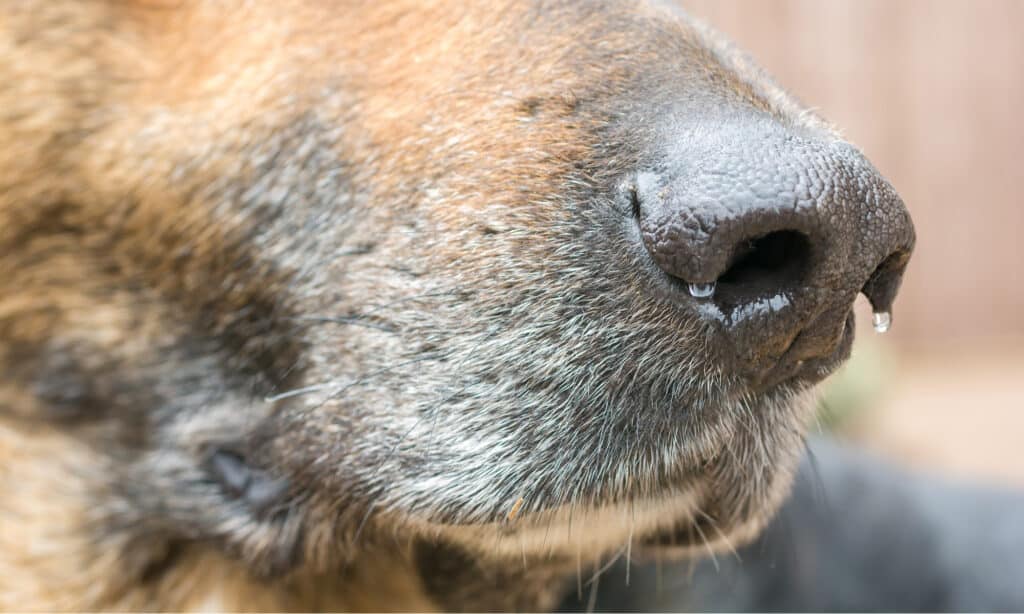
Conclusion: Successfully Managing and Preventing Infected Ingrown Dog Whiskers
Infected ingrown whiskers can be a painful and uncomfortable experience for your furry friend. However, by understanding the causes, recognizing the symptoms, and applying appropriate home care solutions, you can help your dog recover quickly and prevent future issues. Consistent grooming, maintaining a healthy skin and coat, and staying vigilant for early signs of trouble are essential to ensuring your dog’s whisker health.
Don’t hesitate to consult your veterinarian if you’re unsure about your dog’s condition or need expert advice. With proper care, attention, and a proactive approach, you can successfully manage and prevent infected ingrown dog whiskers. This allows your canine companion to enjoy a comfortable, worry-free life.
Remember, your dog’s whiskers are an essential part of their sensory system, and keeping them healthy is an important aspect of overall pet care. By following the tips and strategies outlined in this blog, you’ll be well-equipped to support your dog’s whisker health and ensure their overall well-being. Happy whisker care, and here’s to your dog’s swift recovery and ongoing health!
~Lindsie
